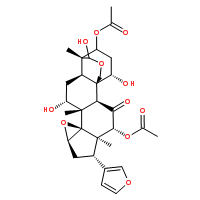Antibodies against the same subtype of NA, but not the exact NA molecule, can contribute to protective immune responses. When delivered via parenteral or mucosal routes, VLPs may be particularly effective immunogens at priming T cells and targeting antigen-presenting cells, as described for other VLPs, as well as inducing high titered antibody responses. Another key factor is the authentic presentation of surface HA and NA in native, three-dimensional conformation. Recent clinical trials of human papillomavirus VLPs have led to FDA approval and therefore, this may bode well for the approval of additional VLP-based vaccines, including influenza VLPs. Our influenza VLPs are easy to develop, produce, and manufacture. They are not labor-intensive and they do not require costly production schemes typically associated with manufacturing vaccines in eggs. VLP vaccines, like other recombinant influenza vaccines, are particularly advantageous to address future pandemics because these vaccines 1) need shorter lead times for development of vaccines matched to circulating strains of viruses, 2) use recombinant DNA technology to alleviate safety restrictions and bottlenecks associated with dependence on live viruses, 3) use cell culture based methods with disposable bioreactors to provide rapid response and higher yields for improved surge capacity. In studies reported here, all mice vaccinated intramuscularly with either vaccine or intranasally with the VLP vaccines survived challenge with lethal doses of reassortant viruses. However, intranasal delivery of the VLPs did elicit a broader immune response than the same vaccine delivered intramuscularly. Cellular responses, in particular, were reduced in the lung mucosa in mice vaccinated intramuscularly compared to intranasally vaccinated mice. The ability to elicit mucosal immune responses in the respiratory tract, including the lungs, is desirable for an influenza vaccine. Neutralization of influenza by pre-existing sIgA and IgG in the lung reduces infection of susceptible epithelial cells and thereby reduces the deleterious effects induced by elevated cytokine levels, which typically lead to the development of fever and respiratory symptoms. H5N1 infection in humans activates cytokine/ chemokine secretion resulting in the occurrence of a ”cytokine storm”that may  contribute to the severity of disease by these viruses. The levels of these pro-inflammatory cytokines, triggered by influenza gene products, are higher during H5N1 virus infection compared to seasonal influenza virus infection. Therefore, vaccines, such as VLPs studied here, that prevent infection by antibody or quickly clear infected cells by cell-mediated immune responses in the lung mucosa may blunt the activation of this deleterious immune activation by reducing viral replication. Compared to particulate antigens, intranasal vaccination of soluble proteins, in the absence of an adjuvant, induces low or undetectable immune responses in Epimedoside-A rodents and primates. In the nasal mucosa, VLPs are most likely phagocytosed by microfold epithelial cells in the nasal lumen and then directly deposited to the NALT via M cell transcytosis, which preferentially Benzethonium Chloride drains into lymph nodes. This process induces strong local and distant immune responses in both peripheral and mucosal immune compartments. In contrast, soluble antigens can penetrate the nasal epithelium and directly interact with dendritic cells, macrophages and lymphocytes and then these antigens are transferred to posterior lymph nodes. Soluble antigens can bypass the NALT and be directly fed into superficial lymph nodes by antigen presenting cells in the nasal lumen resulting in a lower local immune response.
contribute to the severity of disease by these viruses. The levels of these pro-inflammatory cytokines, triggered by influenza gene products, are higher during H5N1 virus infection compared to seasonal influenza virus infection. Therefore, vaccines, such as VLPs studied here, that prevent infection by antibody or quickly clear infected cells by cell-mediated immune responses in the lung mucosa may blunt the activation of this deleterious immune activation by reducing viral replication. Compared to particulate antigens, intranasal vaccination of soluble proteins, in the absence of an adjuvant, induces low or undetectable immune responses in Epimedoside-A rodents and primates. In the nasal mucosa, VLPs are most likely phagocytosed by microfold epithelial cells in the nasal lumen and then directly deposited to the NALT via M cell transcytosis, which preferentially Benzethonium Chloride drains into lymph nodes. This process induces strong local and distant immune responses in both peripheral and mucosal immune compartments. In contrast, soluble antigens can penetrate the nasal epithelium and directly interact with dendritic cells, macrophages and lymphocytes and then these antigens are transferred to posterior lymph nodes. Soluble antigens can bypass the NALT and be directly fed into superficial lymph nodes by antigen presenting cells in the nasal lumen resulting in a lower local immune response.
Therefore VLP immunogens can potentially interact directly with the mucosal
Leave a reply